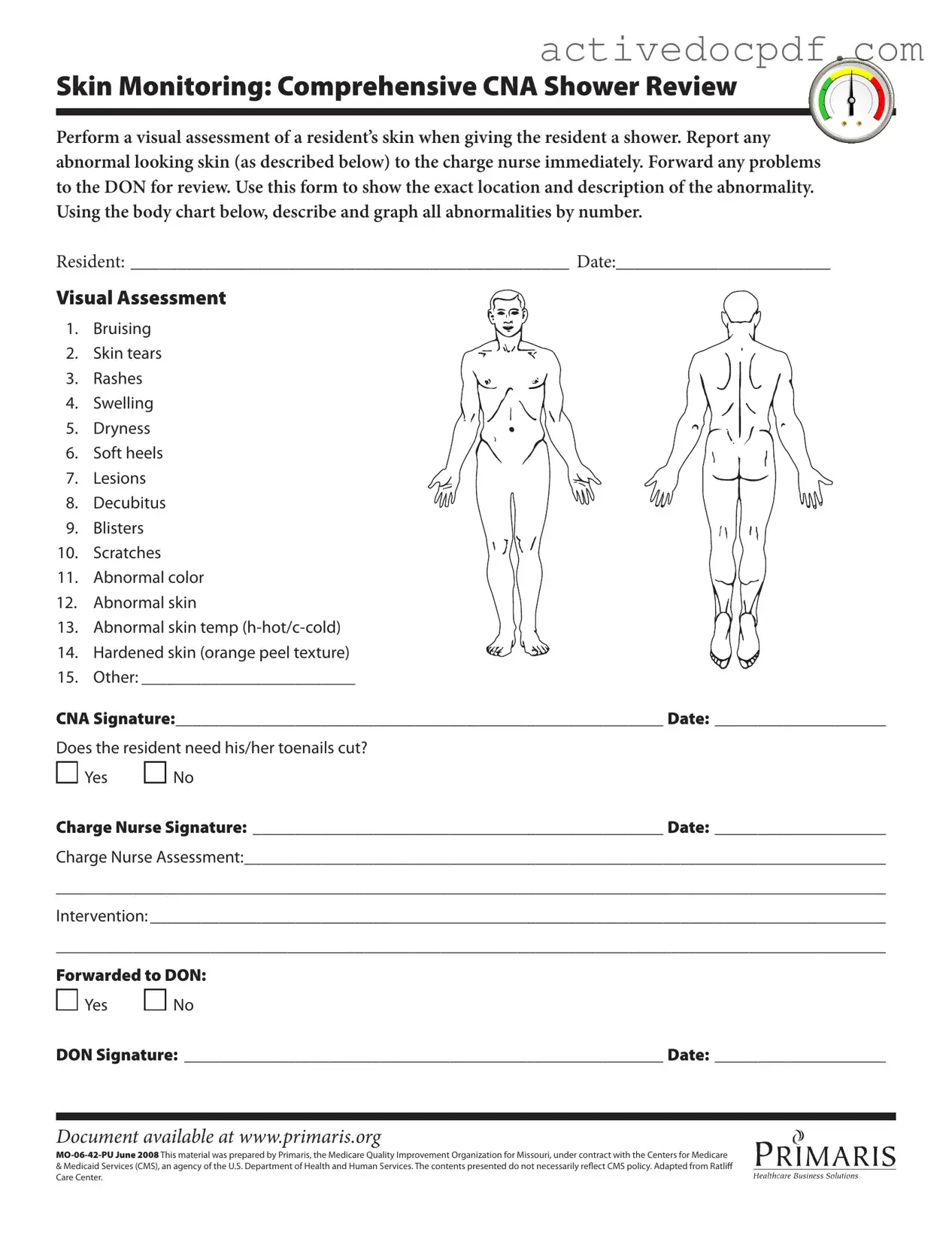The CNA Shower Sheets form is designed to help Certified Nursing Assistants (CNAs) conduct thorough skin assessments while giving residents a shower. It serves as a record of any abnormalities found on the resident’s skin, such as bruises, rashes, or lesions. By documenting these findings, CNAs can ensure that any issues are reported to the charge nurse and addressed promptly, promoting the overall health and well-being of the residents.
How should I fill out the visual assessment section?
When filling out the visual assessment section, carefully examine the resident’s skin during the shower. Look for specific abnormalities listed on the form, such as bruising, swelling, or dryness. For each abnormality you observe, mark its location on the body chart provided and describe it in detail. Be thorough in your descriptions to ensure that the charge nurse has all the information needed for further assessment.
What steps should I take if I notice an abnormality?
If you notice any abnormality during the skin assessment, you should report it to the charge nurse immediately. This ensures that the issue is addressed quickly. After reporting, document the abnormality on the form, including its location and description. The charge nurse will then assess the situation and determine if further action is necessary, such as forwarding the issue to the Director of Nursing (DON).
What should I do if the resident needs their toenails cut?
If the resident requires a toenail trim, you should indicate this on the form by checking "Yes" in the designated section. This information will be passed along to the charge nurse, who will decide on the appropriate intervention. Proper foot care is essential for residents, especially those with limited mobility or health issues that affect their feet.
The CNA Shower Sheets form is an important tool in the overall care process. It facilitates communication between CNAs, charge nurses, and the Director of Nursing. By documenting skin assessments and any necessary interventions, the form helps ensure that residents receive timely and appropriate care. This collaborative approach enhances the quality of care provided and supports the health and safety of all residents.
